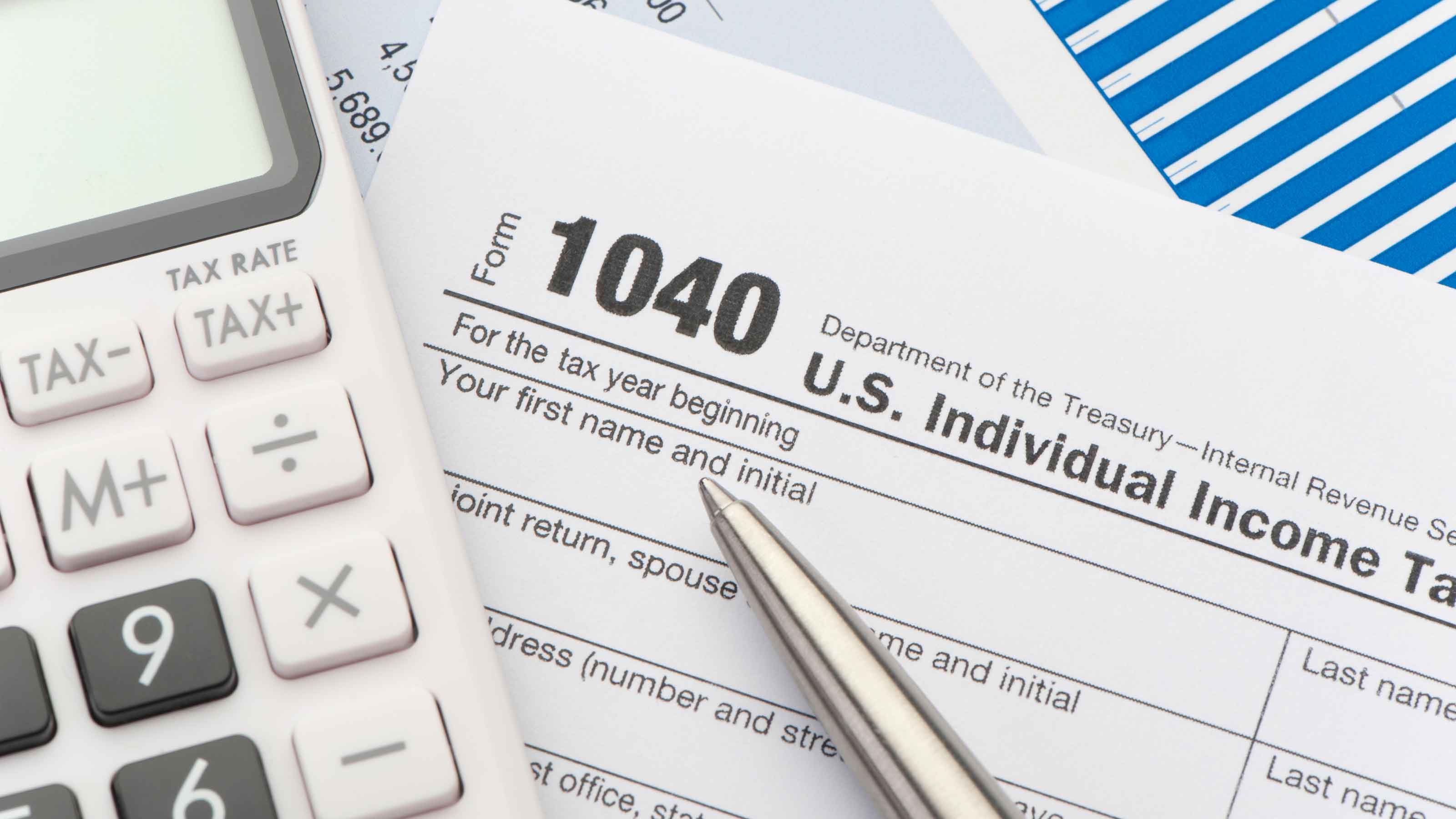Retirees, Make These Midyear Moves to Cut Next Year's Tax Bill
Save money next April by making these six hot-as-July tax moves.


To the list of classic midsummer activities like Fourth of July picnics and trips to the beach, you might add one more: Prep for next year's tax return. These six midyear tax moves are a good place to start if the goal is saving money next April.
Check Withholding and Estimated Payments
Retirees can have taxes withheld from Social Security benefits and taxable retirement account distributions, or they can make quarterly estimated tax payments. Make sure enough money is either withheld or paid quarterly to avoid a penalty for underpayment of taxes when you file your return next year. You can adjust your withholding using Form W-4P for periodic payments from retirement accounts, Form W-4R for nonperiodic payments like a lump sum or payment on demand, or Form W-4V for Social Security benefits. If you're making estimated payments, increase the amount you pay with Form 1040-ES for the rest of the 2022 tax year. Use the same forms for adjustments if you're currently paying too much. Note that Social Security will only withhold at a rate of 7%, 10%, 12% or 22%.
Plan Your RMD
Some people wait until December to take a required minimum distribution and then use it to pay estimated taxes for the entire year all at once. When you use an RMD this way, it's as if you had paid estimated taxes throughout the year. This is true even if the RMD is taken at the end of the year to pay those taxes in full.
From just $107.88 $24.99 for Kiplinger Personal Finance
Be a smarter, better informed investor.

Sign up for Kiplinger’s Free Newsletters
Profit and prosper with the best of expert advice on investing, taxes, retirement, personal finance and more - straight to your e-mail.
Profit and prosper with the best of expert advice - straight to your e-mail.
Distributions from retirement savings accounts are first required the year you turn 72. Someone who turns 72 this year has until next April 1 to take an RMD for 2022. For everyone else, that deadline is Dec. 31 of this year for a 2022 RMD. There are stiff penalties for failing to withdraw the required amount from retirement accounts, so if you haven't yet taken this year's RMD, decide when and how you'll do it. Our RMD calculator can help you determine how much to withdraw.
Pad Your Nest Egg
If you're still working, see if you can afford to squirrel away more money for retirement. For 2022, people age 50 and older can contribute up to $27,000 to a 401(k) or 403(b) plan. Consider saving more during the rest of the year if you're not on track to reach the maximum. The contribution limit for an IRA is $7,000 this year for savers age 50 or older. You have until April 2023 to put money in an IRA for 2022, but there's no reason to wait if you can contribute now. IRA contributions may be deductible depending on your income and whether you have a retirement plan at work. Lower-income people saving for retirement may qualify for a tax credit worth up to $1,000 ($2,000 for joint filers).
Consider a Roth Conversion
If you have a traditional IRA, think about converting some or all of it to a Roth IRA. You'll pay taxes at your ordinary income tax rate on the amount converted this year in exchange for taxfree withdrawals in retirement. This can be a good strategy if you believe your tax rates will be higher in the future, a distinct possibility given that the lower tax rates enacted in 2017 are currently set to expire in 2026.
Give to Charity
Summer is also a good time to plan your charitable giving for the rest of the year. One tax-smart approach is to set up a qualified charitable distribution from an IRA. Because the money goes directly to charity, a QCD counts as an RMD without adding to your adjusted gross income. You must be at least 70½ years old to make a QCD, which can be as much as $100,000 each year.
"Bunching" is another tax-friendly way to donate and consists of consolidating charitable deductions from multiple years into a single year. With this strategy, you can itemize and maximize the deduction for charitable giving simultaneously. Also consider using a donor-advised fund if you're bunching donations.
Make Gifts to Family or Friends
In 2022, you can give up to $16,000 per person ($32,000 if your spouse agrees) without having to file a gift tax return or tap your lifetime estate and gift tax exemption. Christmas in July, anyone?
Profit and prosper with the best of Kiplinger's advice on investing, taxes, retirement, personal finance and much more. Delivered daily. Enter your email in the box and click Sign Me Up.
Rocky Mengle was a Senior Tax Editor for Kiplinger from October 2018 to January 2023 with more than 20 years of experience covering federal and state tax developments. Before coming to Kiplinger, Rocky worked for Wolters Kluwer Tax & Accounting, and Kleinrock Publishing, where he provided breaking news and guidance for CPAs, tax attorneys, and other tax professionals. He has also been quoted as an expert by USA Today, Forbes, U.S. News & World Report, Reuters, Accounting Today, and other media outlets. Rocky holds a law degree from the University of Connecticut and a B.A. in History from Salisbury University.
-
 4 Black Friday Scams to Watch Out for
4 Black Friday Scams to Watch Out forThe deals are heating up, but so are the scams. Here's how to spot some of the most common Black Friday scams this holiday season.
-
 Ramit Sethi Tells Us the Biggest Retirement Mistake You Can Make
Ramit Sethi Tells Us the Biggest Retirement Mistake You Can MakeThe MasterClass instructor, author and behavioral finance expert on what could be costing retirees their happiness.
-
 3 Ways High-Income Earners Can Maximize Their Charitable Donations in 2025
3 Ways High-Income Earners Can Maximize Their Charitable Donations in 2025Tax Deductions New charitable giving tax rules will soon lower your deduction for donations to charity — here’s what you should do now.
-
 An HSA Sounds Great for Taxes: Here’s Why It Might Not Be Right for You
An HSA Sounds Great for Taxes: Here’s Why It Might Not Be Right for YouHealth Savings Even with the promise of ‘triple tax benefits,’ a health savings account might not be the best health plan option for everyone.
-
 10 Retirement Tax Plan Moves to Make Before December 31
10 Retirement Tax Plan Moves to Make Before December 31Retirement Taxes Proactively reviewing your health coverage, RMDs and IRAs can lower retirement taxes in 2025 and 2026. Here’s how.
-
 The Original Property Tax Hack: Avoiding The ‘Window Tax’
The Original Property Tax Hack: Avoiding The ‘Window Tax’Property Taxes Here’s how homeowners can challenge their home assessment and potentially reduce their property taxes — with a little lesson from history.
-
 Three Critical Tax Changes Could Boost Your Paycheck in 2026
Three Critical Tax Changes Could Boost Your Paycheck in 2026Tax Tips The IRS predicts these tax breaks may change take-home pay in 2026. Will you get over $1,000 in tax savings?
-
 What’s the New 2026 Estate Tax Exemption Amount?
What’s the New 2026 Estate Tax Exemption Amount?Estate Tax The IRS just increased the exemption as we enter into a promising tax year for estates and inheritances.
-
 IRS Updates 2026 Tax Deduction for People Age 65 and Older
IRS Updates 2026 Tax Deduction for People Age 65 and OlderTax Changes Adjustments to the extra standard deduction can impact the tax bills of millions of older adults. Here are some new amounts to know for 2026.
-
 IRS Reveals New 2026 Child Tax Credit and other Family Credit Amounts
IRS Reveals New 2026 Child Tax Credit and other Family Credit AmountsTax Credits Key family tax breaks are higher for 2026, including the Earned Income Tax Credit and the Adoption Credit. Here's what they're worth.
